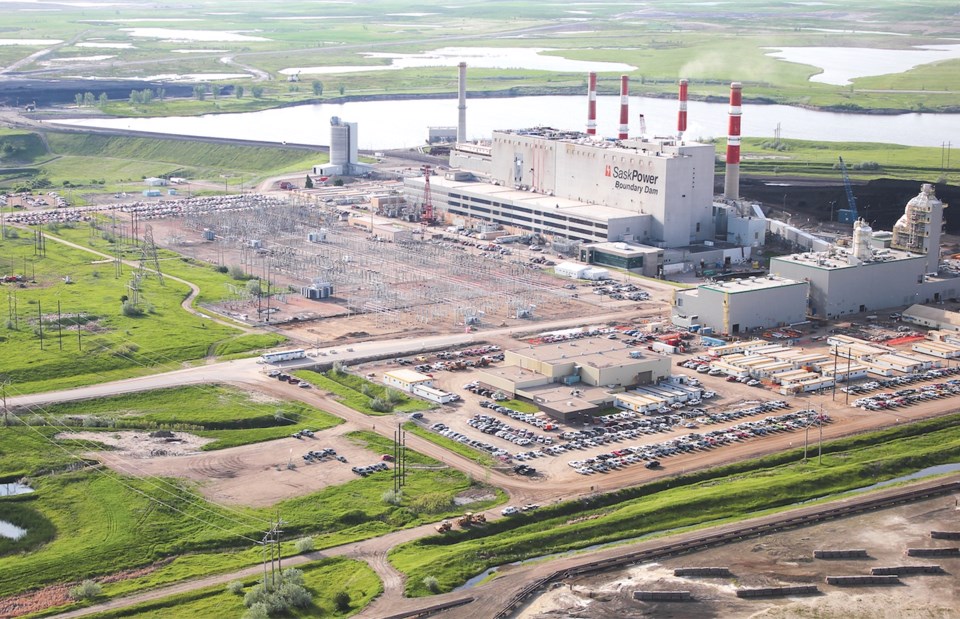Units 4 and 5 at the Boundary Dam Power Station aren’t part of the provincial government’s long-term power production plans, and now there are questions regarding how much coal power will be part of power generation in the future.
SaskPower announced on Monday that Units 4 and 5 at Boundary Dam would be retired, rather than receive a carbon capture and storage (CCS) retrofit.
The future of Units 4 and 5 has been the subject of much speculation, as the government was faced with a decision whether to retrofit them with CCS technology, or look at other options for baseload power generation.
If the provincial government is able to reach the much-discussed equivalency agreement with its federal counterparts, then Units 4 and 5 would come offline in 2021 and 2024, respectively. But without an agreement, they would be shuttered on Dec. 31, 2019.
SaskPower is currently supporting the Saskatchewan Ministry of the Environment’s efforts to secure an equivalency agreement, which is expected this year. The equivalency agreement would allow the province to meet or improve upon federal emission requirements over time on a system-wide basis, as opposed to every coal-fired plant.
“There was a significant amount of analysis that went into making the decision to not retrofit Boundary Dam 4 and 5 with CCS technology,” said Dustin Duncan, the minister responsible for SaskPower, in an interview with the Mercury. “It certainly was not an easy decision to make, but ultimately the business case couldn’t be made that would justify going through the retrofit on CCS for 4 and 5.”
Because the units have reached the end of their lifespan, Duncan claimed they were going to require $200 million to $300 million each for upgrades before the CCS technology could be applied to the two units.
And since the costs were not competitive with other alternatives, Duncan said there wasn’t a firm dollar figure on how much it would cost to apply the CCS technology, and whether it would cost less than the original CCS facility, which opened in 2014.
CCS and natural gas were viewed as the two options for new baseload power.
“With historically low gas prices, when you look at the cost comparison between gas prices for today as well as for the foreseeable future, certainly it appears that we’re going to have a surplus of gas in North America,” he said.
But natural gas is also prone to volatile price swings, an issue that SaskPower has acknowledged in the past.
A decision has not been made on where a natural gas facility would be located. The Chinook Power Station is being constructed in the Swift Current area, and for the next baseload project, SaskPower is doing analysis on which site makes the most sense.
Estevan would be considered as an option for such a facility.
“Knowing the decision that we have to make with respect to the coal fleets over the next decade, I think SaskPower is going to keep a close eye on how we can mitigate as much of that as possible.”
The eventual retirement of the units is not anticipated to include any layoffs for the 40 employees involved. Duncan said there will be opportunities for people to move into other positions, including to other plants outside of the community.
Attrition could also allow them to avoid laying people off.
Units 4 and 5 each produce 150 megawatts of power, which is the same as Unit 3.
But Duncan said that when the government decided to proceed with a retrofit of Unit 3 at Boundary Dam nearly a decade ago, the price of natural gas was much higher.
Also, the federal government contributed $240 million to Unit 3. The provincial government was going to be on its own this time.
CCS technology will continue to be used at Unit 3 at Boundary Dam. In a news release, SaskPower said Unit 3 has demonstrated how conventional coal can be replaced with a low-emission process that makes Unit 3 one of the world’s cleanest-burning coal power units.
A high-level CCS feasibility study is being prepared for the Shand Power Station east of Estevan. That feasibility study does not extend to Unit 6 at the Boundary Dam Power Station.
Duncan said Unit 6 at Boundary Dam remains in the mix for future baseload power options.
“The feasibility is being done on Shand just because absent of the issue around natural gas costs, there are other factors that I think are more favourable for Shand,” said Duncan. “For instance, Shand is a bigger unit. It’s a 300-megawatt unit. So the economies of scale make the business case that much better for Shand. As well, Shand was built with a footprint for a second 300-megawatt unit that was never built, so the footprint of Shand is not as congested at Boundary Dam.”
Duncan said the equivalency could be signed “any day now.” The federal government has asked SaskPower for information on how it would reach its stated goal of a 40 per cent reduction in greenhouse gases by 2030.
That information has been supplied to the federal government, and he hopes that will clarify what they were looking for.



